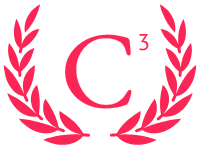
Nate Van Heuveln | Psychotherapist & Consultant | Date
Summary
- This article aims to provide guidance on how to optimize productivity by categorizing work tasks using the Franklin Covey Time Matrix®.
- The matrix divides tasks into four quadrants based on their importance and urgency, with Quadrant 2 (Q2) tasks being the most valuable.
- A recommendation is to spend more time on these Q2 tasks, which are essential but not urgent, as they lead to greater productivity and more free time.
- Quadrant 1 (Q1) tasks are both important and urgent and should be attended to quickly.
- Quadrant 3 (Q3) tasks are urgent but not important and should be minimized.
- Finally, Quadrant 4 (Q4) tasks are time-wasting and should also be avoided.
Note: The information in this post is for educational purposes only and does not substitute for mental health care from a licensed provider. If you are experiencing a mental health crisis or emergency, call 988 or 911 for all other emergencies.
If you’re like many people, you’ve felt overwhelmed by your daily workload and may have found yourself trading off leisure time and family experiences due to an endless to-do list. You’ve likely thought, “There’s got to be a better way to manage my time and increase productivity.”
The good news: there is a better way!
By the end of this post, you will learn how I learned to spend less time working and generate more free time for myself and my loved ones.
Categorize Your Work Tasks for Maximum Productivity
To use the Franklin Covey Time Matrix® to categorize your work tasks effectively, start by analyzing your work through the lens of Urgency vs. Non-Urgency and Important vs. Unimportant.

Understanding the difference between Urgent and Important tasks is crucial. Important tasks are essential responsibilities of your job, though they may need to be completed in the near future or over a longer period. Urgent tasks require immediate attention (even if they are not important). For example, assisting an unhappy customer is both urgent and important in a customer service role.
In contrast, responding to a marketing email offering a discount might be urgent but may not be important to your primary job responsibilities. To ensure a productive workday, focus on Quadrant 2 (Q2) tasks, which are important but not urgent. This proactive approach may lead to enhanced productivity and more free time.
Embrace the Quadrant 2 (Q2) Work Zone
Consider the Time Matrix applied to a hypothetical teacher. Planning for future lessons and student assessments is crucial but not urgent. These Q2 tasks are core duties that significantly impact student success.
Working in the Q2 zone allows for effective planning and execution of essential tasks. Procrastination here can escalate Q2 duties, turning them into urgent Q1 tasks, leading to urgent situations that could have been avoided with earlier planning.
Quickly Address Quadrant 1 (Q1) Tasks as Needed
Quadrant 1 tasks are urgent and important, such as substituting for a colleague at the last minute (-again, using the teacher as an example). Delaying these tasks can result in negative outcomes, like failing to meet critical deadlines. While these tasks require immediate attention, strive to resolve them quickly, and return to your Q2 tasks.
Avoid Quadrant 3 (Q3) Tasks
Quadrant 3 tasks are urgent but not important, like editing slideshows or attending irrelevant webinars. These tasks can be distractions with minimal value to your core responsibilities. It’s crucial to differentiate between urgency and importance to avoid getting sidetracked by Q3 tasks.
Steer Clear of Quadrant 4 (Q4) Time-Wasting Tasks
Q4 tasks are time-wasting activities, such as excessive TV watching or chatting when work needs to be done. Recognizing and avoiding these tasks helps maintain focus on productive activities and contributes to better time management.
How This Approach Benefits Mental Health
Organizing your tasks using the Franklin Covey Time Matrix approach may not only boost productivity but also significantly benefit your mental health. This method helps reduce stress by providing a clear structure for prioritizing tasks, which can prevent feelings of being overwhelmed and burned out.
Cognitive Behavioral Theory (CBT) supports this approach by emphasizing the importance of structured problem-solving and time management. CBT techniques often involve breaking down tasks into manageable parts and addressing them systematically—similar to the principles of the Time Matrix. By focusing on Q2 tasks, you can proactively manage your workload, reduce the occurrence of last-minute emergencies (Q1), and avoid the anxiety associated with procrastination and disorganization.
Furthermore, spending more time on important but non-urgent tasks (Q2) allows you to engage in value-aligned activities that foster personal and professional growth, leading to a greater sense of accomplishment and well-being. This structured approach aligns with CBT strategies that aim to improve mental health through better time management and prioritization.
Conclusion: Sustain Your Productivity in Quadrant 2
By categorizing your work tasks and focusing on the right activities, you can enhance productivity and enjoy more meaningful free time.
- Prioritize Quadrant 2 (Q2) tasks for long-term success.
- Minimize Quadrant 3 (Q3) distractions.
- Handle Quadrant 1 (Q1) emergencies swiftly.
- Avoid Quadrant 4 (Q4) time-wasters.
Consider implementing this approach to help optimize your workday and enjoy a more balanced life. Soon, you’ll have a new challenge: finding meaningful ways to use your newfound free time.
Feel free to contact me to discuss how to make your workday more productive or leave a comment below to share your productivity tips.
Relevant Resources:
- Non-Academic Read: https://www.franklincovey.com/blog/manage-your-time-and-energy-effectively/
- Non-Academic Read: Kogon, K., Merrill, A., & Rinne, L. (2014). The 5 Choices: The Path to Extraordinary Productivity. Simon and Schuster.
- Academic Read: Ebert, P., & Freibichler, W. (2017). Nudge Management: Applying Behavioral Science to Increase Knowledge Worker Productivity. Journal of Organization Design, 6(1), 1-6.

Nate Van Heuveln, Owner, Pre-Licensed Psychotherapist, & Consultant | Criterion Counseling & Consulting
Have additional questions?
We’re here to help. Let’s talk.




